
| What is Flavor and Fortune? |
| How do I subscribe? |
| How do I get past issues? |
| How do I advertise? |
| How do I contact the editor? |
Read 12913730 times
Connect me to:
| Home |
| Articles |
| Book reviews |
| Letters to the Editor |
| Newmans News and Notes |
| Recipes |
| Restaurant reviews |
| Article Index (all years, slow) |
| List of Article Years |
| Article Index (2025) |
| Article Index (last 2 years) |
| Things others say |
| Related Links |
| Log In... |
| Authors |
| Categories & Topics |
Flowers: A Culinary Romance--Part II
| by Teresa M. Chen |
Unusual Ingredients
Fall Volume: 2011 Issue: 18(3) page(s): 11, 12, 13, and 37
FLOWERS AS LORE: The last issue of Flavor and Fortune, that is Volume 18(2) on pages 5, 6, and 7, included my article about some flower symbolisms, specifically the 'four gentlemen.' These are the mei or plum blossoms, the lan or cymbidium orchids, the ju or chrysanthemum flowers, and the lian or lotus flowers.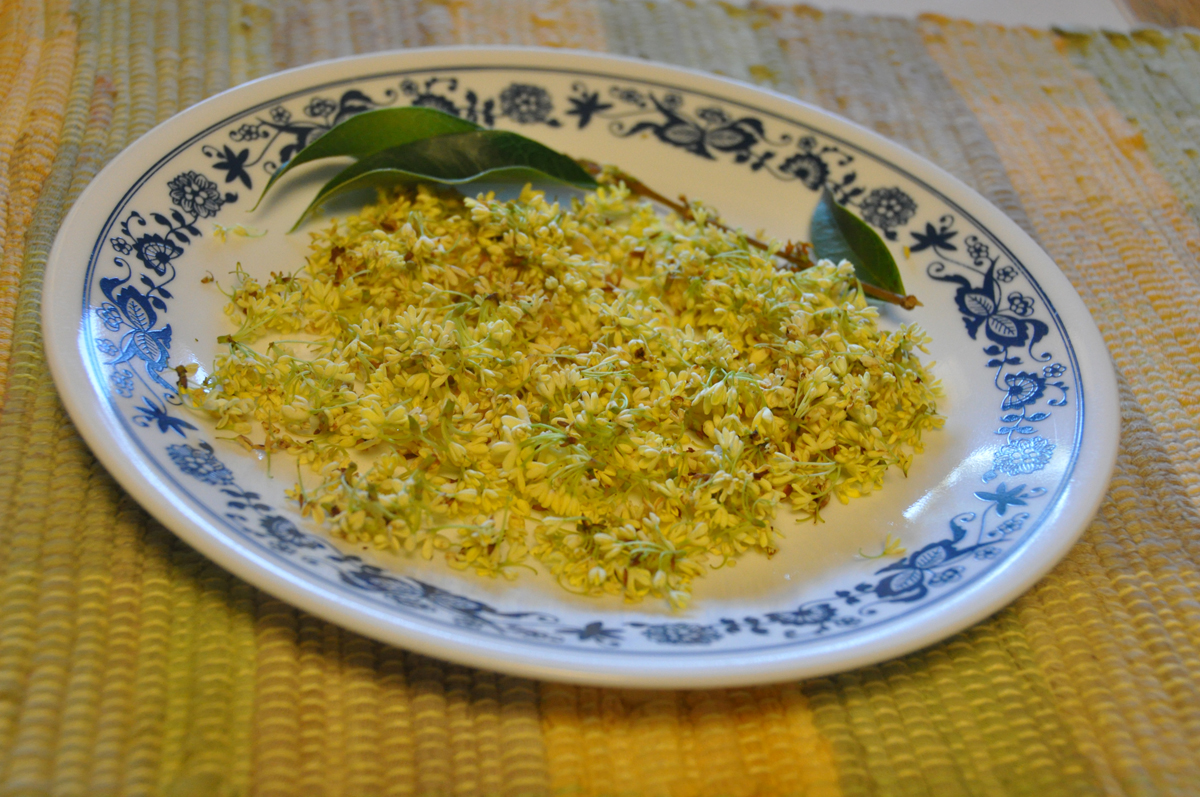
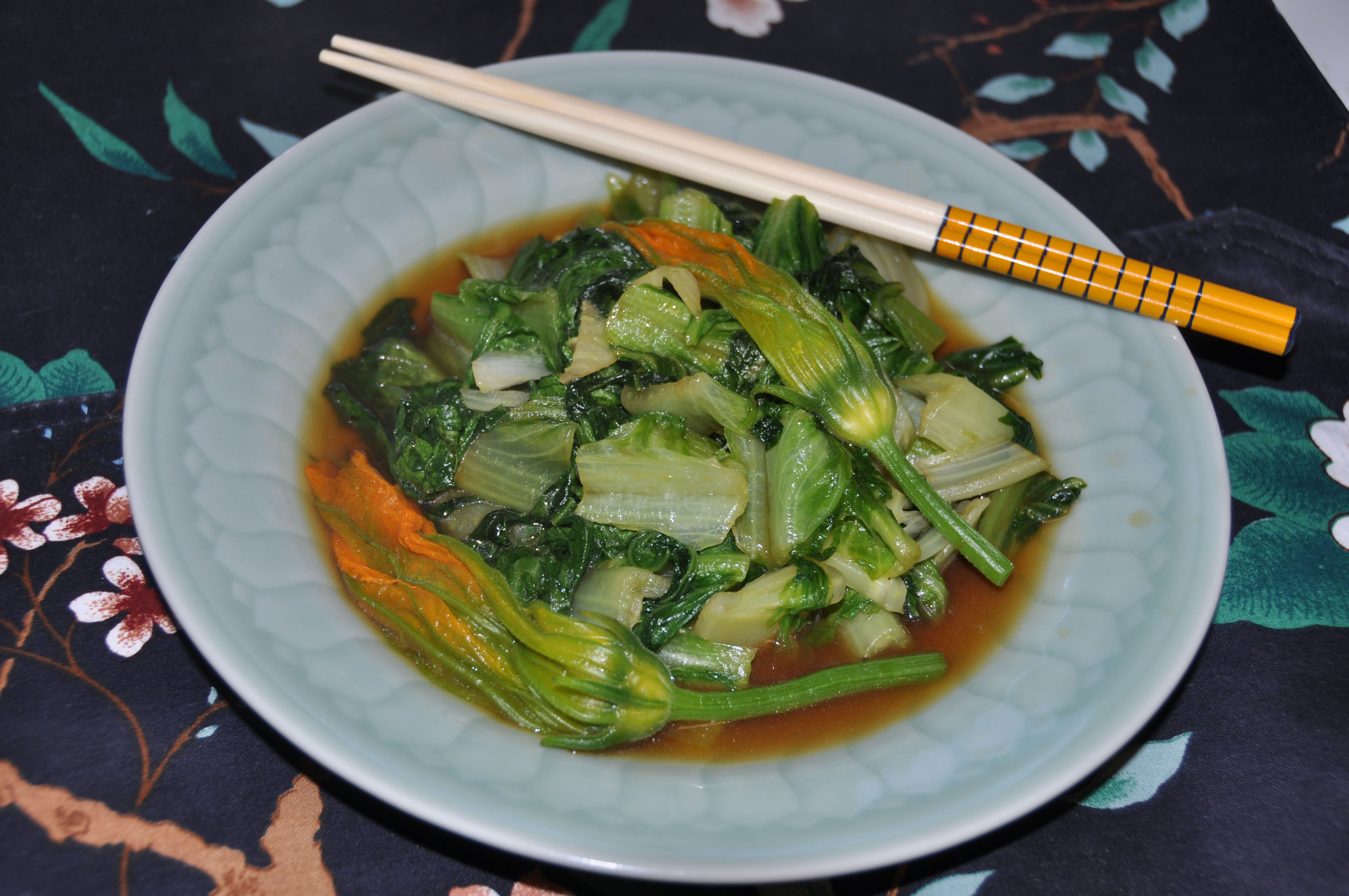
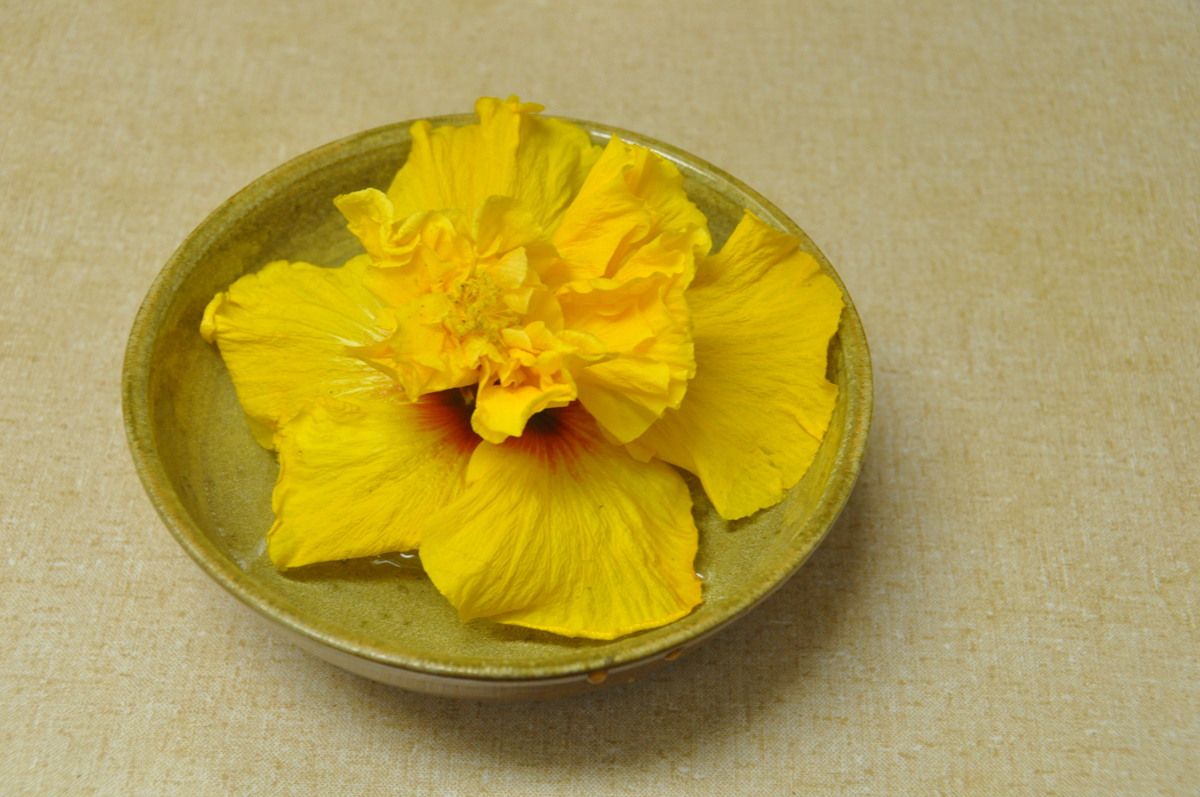
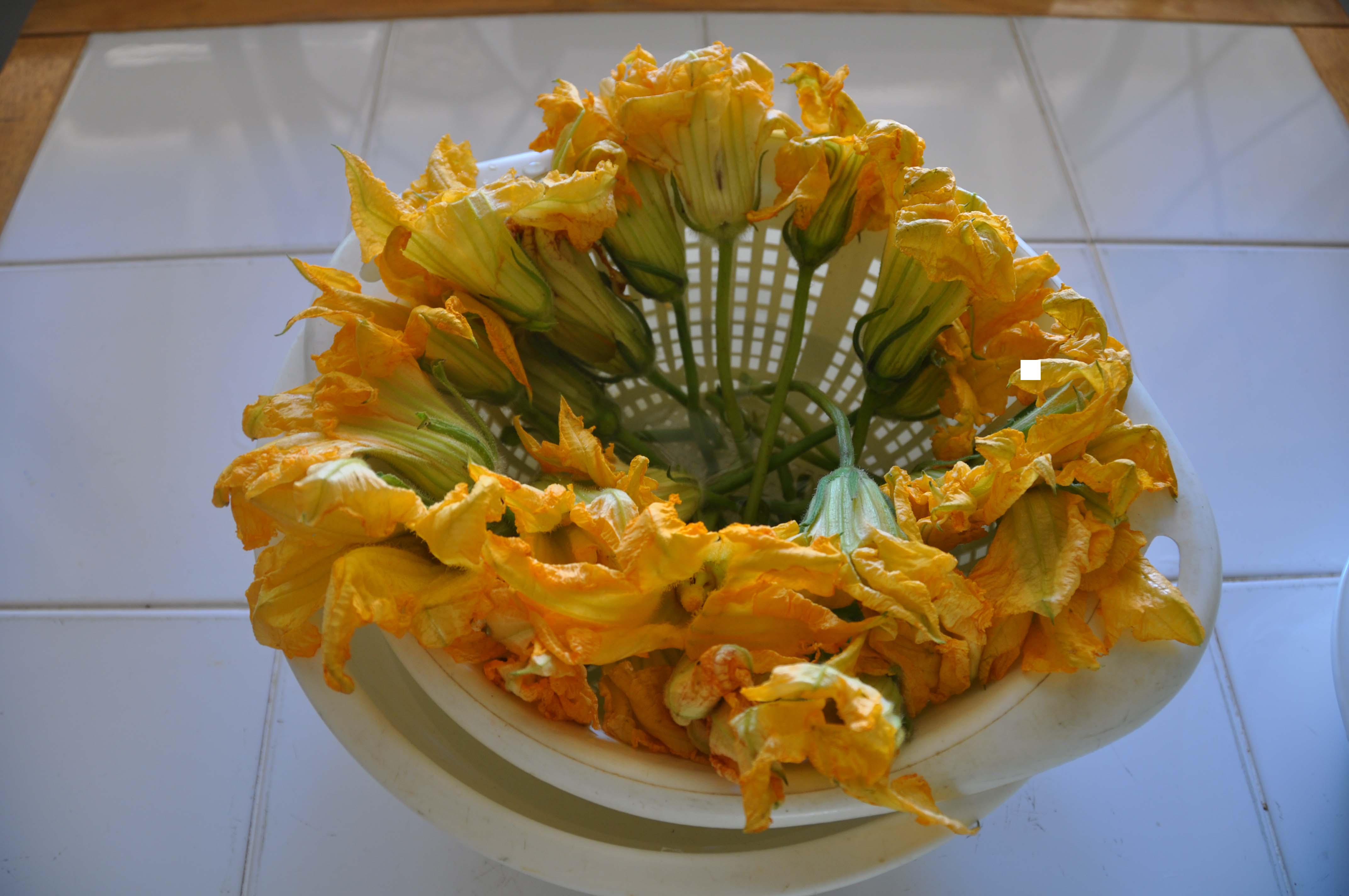
Needless to say, there are many other flowers admired in China including the azalea, camellia, hibiscus, jasmine, magnolia, narcissus, osmanthus, peony, and wisteria, and the blossoms of the peach and the pear. These and others are often seen in Chinese art and literature. Many of them are symbolic.
Azalea bushes are popular in landscaping, the beautiful spots on them, inspire a legend about an ancient king who mourned his beloved. His tears turned to blood and splattered their petals. Later, when he dies of grief, he turns into a cuckoo bird who calls to her. For the Chinese, both the azalea and the cuckoo are called du juan.
Camellias originally grew in southwestern China in the Yunnan Province. The camellia is called cha hua, literally translated as the ''tea-flower.'' This blossom has strong associations with the teas we drink. They are made from leaves of the Camelia sinensis plant.
Puccini incorporated the melody of a beautiful Chinese folk song into his opera, Turandot. This tune, played whenever the Chinese princess appears, originally was a song about shui xian, the narcissus. In Taiwan nowadays, the lyrics are changed to sing about the jasmine flower.
The great Tang poet, Li Bo, compared the beauty of Yang Gui-fei, the favorite consort of Emperor Xuan-Zong, to a richly colored fragrant peony. Despite Zhou Dun-yi''s denouncement of the peony as a flower for the rich and powerful in favor of his beloved lotus blossom, the peony has remained a coveted plant throughout the centuries. It is a popular Chinese subject in paintings, embroidery, furniture carving, engraving, and inlay; no doubt because peonies are showy flowers. One flower head can be as large as ten inches in diameter and have a plethora of shapely petals.
Hibiscus sinensis and the Rose of Sharon are related. They are associated with beautiful girls, and in particular, with the maiden Qing Wen in The Dream of Red Chamber. The calyx of Hibiscus jamaica is edible and can be consumed as a dried fruit. It is also used to flavor and tint teas or beverages a crimson red color. Known also as Roselle, it was discussed in Flavor and Fortune's Volume 18(1) on page 21.
Mu lan, the magnolia, is beautiful in its own right. It has added an allure because of Fa Mulan, a woman warrior. She is mentioned in a Massachusetts restaurant review, one named after her, in Flavor and Fortune's Volume 18(1) on pages 26 and 27.
There is the Sisyphus-like character of Wu Gang who tried in vain to chop down the sweet osmanthus tree in the moon. Though the tree healed itself instantly to taunt him, it did offer fragrant flowers for Wu to use making a delicious wine.
FLOWERS AS DESIGN IMITATIONS: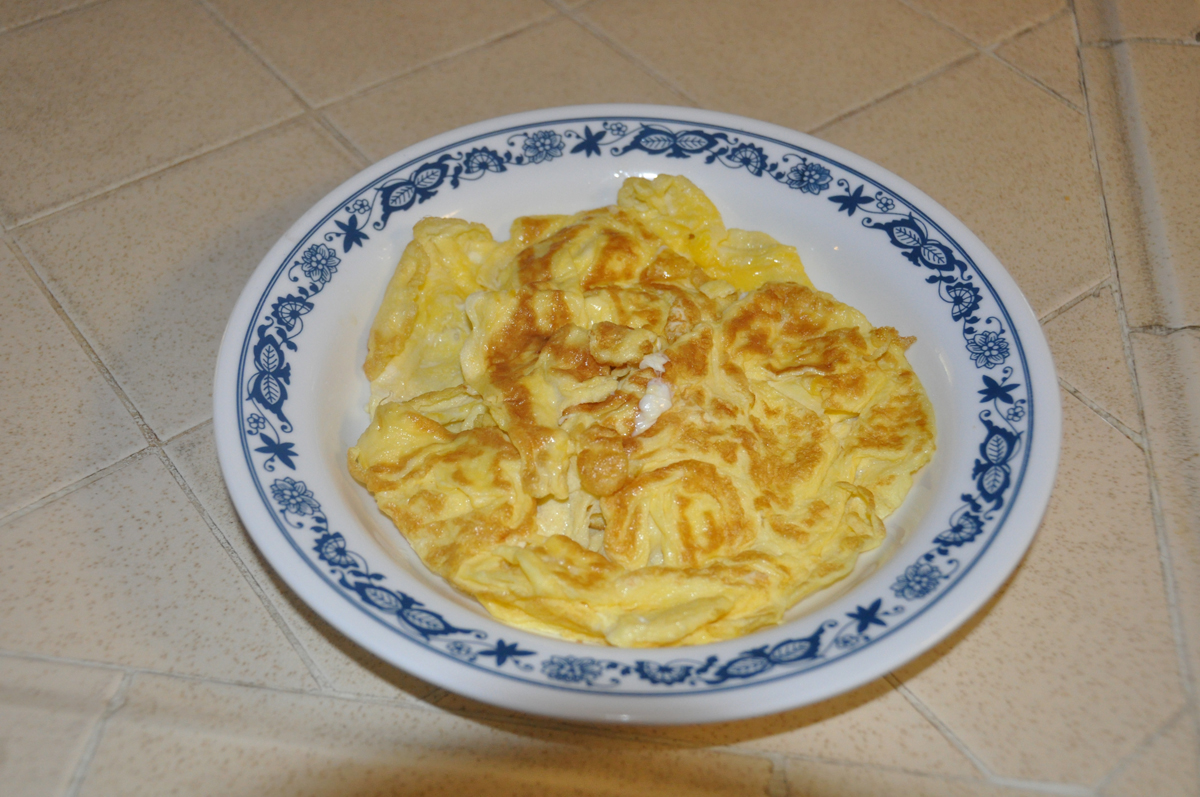 Chinese chefs are skillful in carving food into flower shapes and arranging the pieces they cut into floral patterns. Eggs thoroughly beaten and finely stir-fried mimic the tiny yellow flowers of the sweet osmanthus. Dishes with them acquire the name mu xu, these were commonly spelled mu shu, which is synonymous with gui hua, or the osmanthus. Another egg dish that mimics a multi-layered hibiscus is known as fu rong which the Cantonese call fu yung.
Chinese chefs are skillful in carving food into flower shapes and arranging the pieces they cut into floral patterns. Eggs thoroughly beaten and finely stir-fried mimic the tiny yellow flowers of the sweet osmanthus. Dishes with them acquire the name mu xu, these were commonly spelled mu shu, which is synonymous with gui hua, or the osmanthus. Another egg dish that mimics a multi-layered hibiscus is known as fu rong which the Cantonese call fu yung.
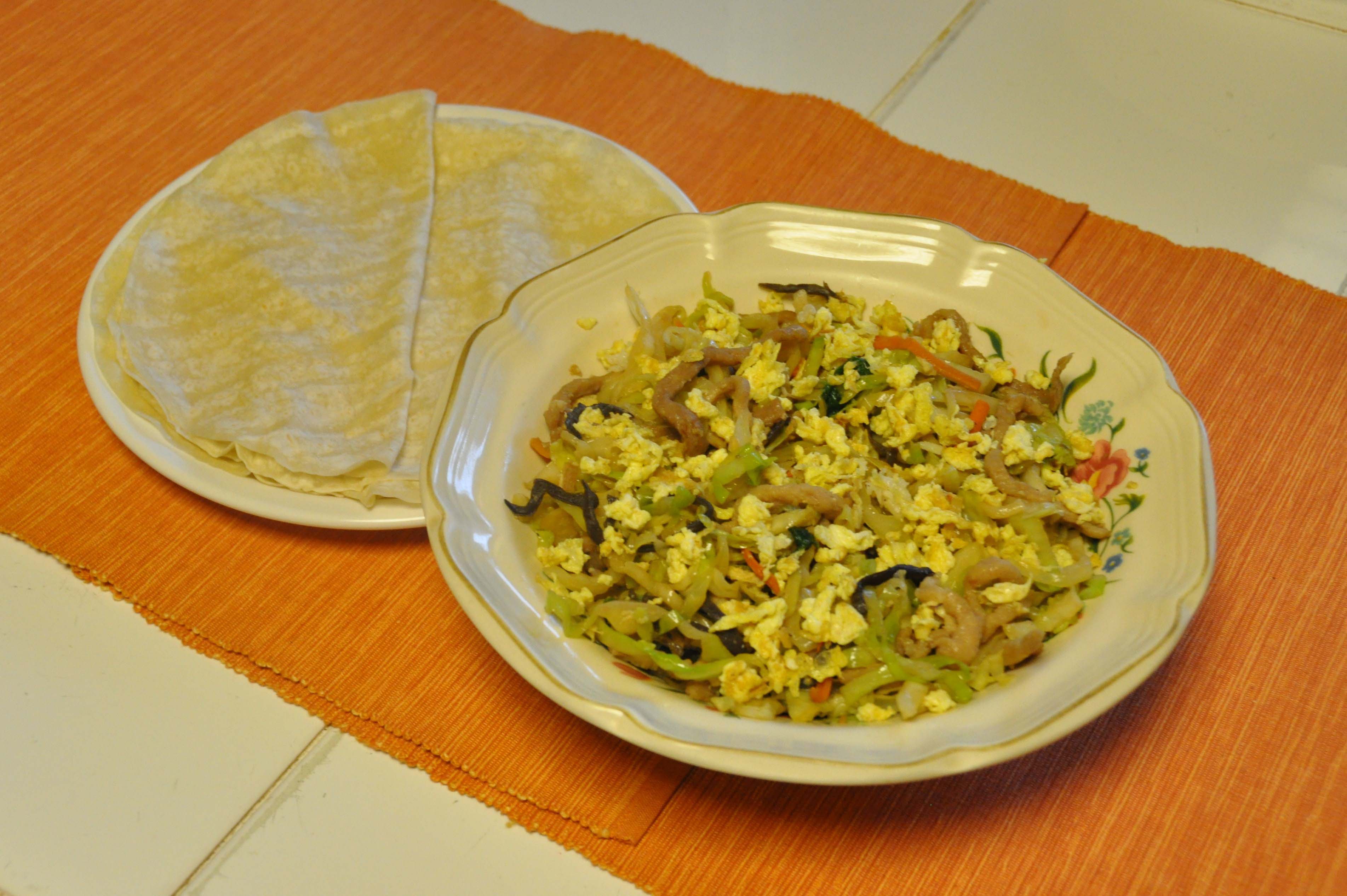
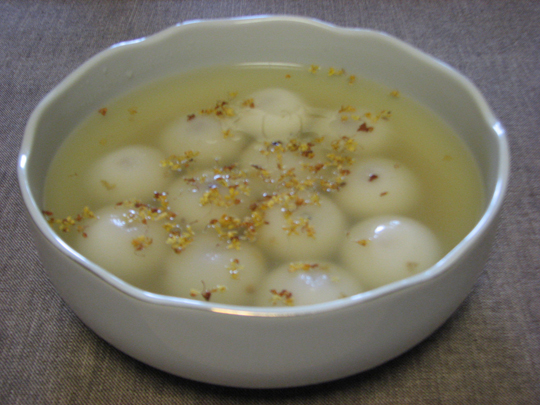
Making this dish, one quickly pushes egg batter from all directions to the wok's center forming folds and creases as it cooks. This makes it look like a yellow flower, as shown in its picture. The Chinese American version, called Egg Foo Young, is made in the shape of a potato pancake; it is a poor imitation.
When I grew up in Hong Kong, my family used to use a big pot of oil to deep-fry gok jai or nut-filled dumplings, jin deui or bean paste filled puffs coated with sesame seeds, and cheui mah fa which are crispy twists. These Cantonese-written foods were prepared in the advent of Chinese New Year.
Women in my family could create many deep-fried treats in different shapes and forms. My most favorite is the chrysanthemum carved out of a cross-section of a piece of taro. Using at least three thin layers of taro strips that radiate from the center, upon frying, they curl and become crispy chips as they sizzle and open into the shape of the chrysanthemum. We placed these blossoms on paper towels to drain and cool, then we stored them in tins. They never stayed long because they were so good.
Flower shapes provide favorite motifs for food styling. Slices or pieces of food are often arranged in floral designs on a round platter. For garnish, tomatoes, radishes, and carrots can be shaped into rosettes while real flowers like roses, chrysanthemums, and dendrobium orchids are used to grace many a dish. The vegetarian dish on the cover and page 20 of Flavor and Fortune's Volume 17(3) is a fine illustration of this.
FLOWERS AS TINCTURES: The fragrance of flowers enhances the flavors of many alcoholic beverages. Most acclaimed are mei gui lu made of rose buds and gui hua jiu made of sweet osmanthus blossoms. Both are steeped in rice wine before the flowers are strained out. Their aromatic wine is enjoyed fresh or bottled and stored for later consumption. Both mei gui lu and gui hua jiu are available commercially. Do look for them in a Chinese liquor store, then purchase one or both, and enjoy!
Instead of rice wine, modern Chinese wine makers flavor grape wine with sweet osmanthus blossoms. This results in prize-winning, rich and smooth after-dinner wines that have fourteen percent alcohol by volume. Widely available in Chinese grocery and liquor stores in the United States, they can be enjoyed, as well.
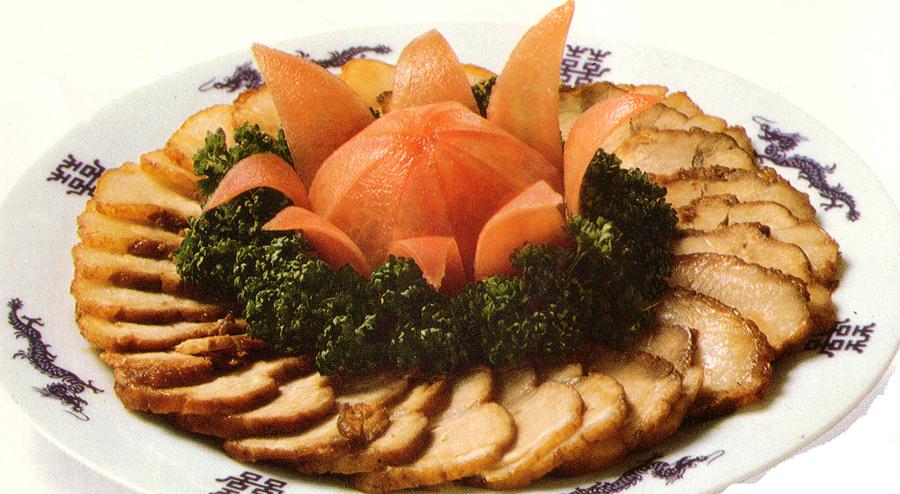 Aromatic wine can be home-made with cooked sweet glutinous rice and brewer's yeast. Below is a gui hua jiu recipe adapted from a Chinese web article by Xia Rou-ye found at www.guihuajiu.net. According to Xiao Ruo-Ye, large quantities of sweet osmanthus wine can be made adding fermented flowers to rice or sorghum wine with thirty-five percent alcohol. Seal these tightly in ceramic jars and store them in a cool dark basement for at least one year. The ratio of freshly picked flowers and dried in a thin layer overnight to white sugar is four to one by weight. Before using the flowers, mix them well and put them in a sealed container to ferment for two to three days before adding them to the wine. Use amounts five times their weight.
Medicinal properties are attributed to both rosebud and sweet osmanthus wine. Mei Gui Lu is reputed to help improve digestion and blood circulation. Rosebuds from the species Rosa rugosa Thumb. are first distilled and then mixed in with wine. In terms of traditional Chinese medicine, Mei Gui Lu harmonizes blood and calms the liver, hence dispelling depression and moodiness. Gui Hua wine aides digestion and strengthens spleen and stomach. These are key to better metabolism and better health. The scents of these flowers are soothing and relaxing. They aid conditions such as nervousness and insomnia.
Aromatic wine can be home-made with cooked sweet glutinous rice and brewer's yeast. Below is a gui hua jiu recipe adapted from a Chinese web article by Xia Rou-ye found at www.guihuajiu.net. According to Xiao Ruo-Ye, large quantities of sweet osmanthus wine can be made adding fermented flowers to rice or sorghum wine with thirty-five percent alcohol. Seal these tightly in ceramic jars and store them in a cool dark basement for at least one year. The ratio of freshly picked flowers and dried in a thin layer overnight to white sugar is four to one by weight. Before using the flowers, mix them well and put them in a sealed container to ferment for two to three days before adding them to the wine. Use amounts five times their weight.
Medicinal properties are attributed to both rosebud and sweet osmanthus wine. Mei Gui Lu is reputed to help improve digestion and blood circulation. Rosebuds from the species Rosa rugosa Thumb. are first distilled and then mixed in with wine. In terms of traditional Chinese medicine, Mei Gui Lu harmonizes blood and calms the liver, hence dispelling depression and moodiness. Gui Hua wine aides digestion and strengthens spleen and stomach. These are key to better metabolism and better health. The scents of these flowers are soothing and relaxing. They aid conditions such as nervousness and insomnia.
Also popular in Chinese wine recipes is the safflower, Carthamus tinctorius. The orange-red flowers dry to fine threads resembling saffron. Medicinally, safflower helps with premenstrual symptoms, improves blood circulation, and warms and strengthens the body. The famous doctor Zhang Zhong-Jing (150–219 CE) of the Han Dynasty gets credit for first introducing safflower into medicinal wines for women.
FLOWERS IN TEA: Tea-makers tap into fragrances such as jasmine and rose to produce aromatic tea blends. They know that many flowers in traditional Chinese medicine have healing properties and are made into beverages or teas. For example, a variety of small white chrysanthemums, Chrysanthemum indicum Linn. can be served as a single-herb tea, or mixed with pu-er tea to make a blend used for indigestion; also added to honeysuckle to treat boils. Self-heal flower spikes are mixed with mulberry leaves and small white chrysanthemums to make an anti-pyretic tea, this is popular especially as a summer beverage.
Cantonese herbalists create several tea blends. One such, wu-hua-cha or Five-Flower Tea uses five kinds of flowers or flower buds. The basic five are usually: honeysuckle, chrysanthemum, plumeria, kapok, and the flower of the hyacinth bean. Honeysuckle figures prominently in Chinese detoxifying formulae, and when used together with chrysanthemum, the infusion is good for treating flu symptoms such as fever, headache, and dizziness. This is also good for skin diseases such as boils and rashes.
The five flowers together deal with 'heat' in the system, yiht hei in Cantonese. This can be caused by greasy and deep-fried food and by sleep deprivation. One finds it manifested as red eyes, black heads, dry mouth, bad breath, sore throat and/or a hoarse voice. Suffice it to say that these teas are preventive as well as healing. They prevent ''heat'' from escalating into worse pyretic and inflammatory conditions. While they do not taste bad, their flavor can be improved by adding sugar or honey.
FLOWERS IN FOOD: Flowers are used in food for color, flavor, or medicinal value; all those with this article show many different ways. The chrysanthemum, also lycii leaves and berries, and Pork Liver Soup are on pages 128-129 of my cookbook, A Tradition of Soup – Flavors from China''s Pearl River Delta. Add white chrysanthemums and red goji berries to a classic recipe, not only adds color, it also to enhances the eye-brightening and liver-cleansing properties of the soup. Another recipe from the same book, that of the Red Bean Paste Dumpling Soup with Sweet Osmanthus found on pages 201-202, takes advantage of the aroma, color and flavor of the sweet osmanthus flowers to dress up a bowl of plain-looking dumplings. Sweet osmanthus flowers can also be sprinkled in clear gelatin to make a dessert with a distinct osmanthus flavor.
You may have seen pictures of baby squash attached to their blossom in gourmet magazines. In farmers markets, the bunches of squash blossoms are almost always male flowers. They are delicious as a side dish, blanched and drizzled with oil, or deep-fried in a light tempura batter. The batter in the first recipe below which is one popular one is courtesy of Winnie Wong of Stockton, CA.
In the previous issue of Flavor and Fortune, I gave recipes for favorite dishes that feature garlic chive stalks and tiger lily buds. In this issue, are two medicinal dishes, one with safflower and one with roses, both often used for women's health. Both safflower and rose have been used in cosmetics for centuries, the former for lipsticks, the latter in perfumes. In food, as in wines, these flowers tonify blood, promote circulation, regulate the period, warm the system, and help with pre-menstrual syndrome and menopausal syndrome.
_____
Teresa M. Chen, author of: A Tradition of Soup: Flavors from China''s Pearl River Delta published by North Atlantic Books in 2009, is a health educator at the Pacific Complementary Medicine Center in Stockton CA.
| Airy Batter |
|---|
1 cup flour 1 cup sparkling water 1 pinch salt any flowers of choice Preparation: 1. Heat oil in a deep pot. 2. Mix the flour, water, and salt and set aside for a few minutes. 3. Add one flower at a time, drain and when completely wet, deep fry in the vegetable oil and when crisp, drain on paper towels and fry the next one, and so on. Note: I plan to try this batter with wisteria blossoms, as suggested by a friend who remembers her father making 'Wisteria Tempura.' Aside from use with flowers, this batter can also be used for fish and other foods of the sea, for meats, and/or for vegetables. |
| Gui Hua Rice Wine |
|---|
2 cups sweet glutinous rice 1/2 teaspoon powdered brewer's yeast 1/4 cup fresh picked and dried overnight or dried sweet osmanthus flowers Preparation: 1. Cook rice the usual way, but with slightly less water. 2. Cool the rice to about 95°F (35°C) and then put it into a large, clean glass or earthenware bowl. 3. Mix powdered yeast with the rice, add half cup previously boiled and cooled water, and poke a hole in the center of this mixture to allow for the wine to gather there. 4. Sprinkle a layer of osmanthus flowers evenly on the rice mixture. 5. Cover the bowl tightly with plastic wrap, and wrap the bowl with a towel to keep it warm, placing the wrapped container in a warm spot. 6. After twenty-four to thirty-six hours check to see if there is liquid in the center hole. If so, it is finished. 7. Spoon out the liquid with the fermented rice and enjoy. Note: Any unused material should be covered and refrigerated to prevent further fermentation. |
| Safflower, Tofu, Chives, and Vegetarian Sea Bass |
|---|
1 teaspoon to 1/2 cup safflower flowers 8 ounces vegetarian 'sea bass' steaks; six pieces 6 ounces silken tofu, cut into large cubes 2 ounces garlic chives, cut into one-inch pieces 1 Tablespoon fresh ginger juice 2 Tablespoons cooking wine 1 Tablespoon soy sauce 2 Tablespoons cornstarch 5 ounces jiu zao which is the residue of fermented sweet rice wine, optional 1 Tablespoon vegetable oil Preparation: 1. Place flowers of safflower in a strainer and rinse with cold water, then soak them in a cup of warm water. 2. Blot liquid off mock fish steaks using paper towels. 3. In a flat fry pan, heat oil and pan-fry the mock fish filets until golden then turn over and fry until golden on the other side. 4. Season the filets with ginger juice, wine, and soy sauce. Then add the tofu, jiu zao, if using this ingredient, and the soaking liquid and safflowers, and bring to the boil, then reduce the heat and cook covered for ten minutes. 5. Add garlic chives, re-cover the mixture and let rest for two to three minutes, before serving in a pre-heated deep dish. |
| Rose and Dang Gui with Mutton |
|---|
1/3 ounce sliced dang gui, which is Angelica sinensis 1/2 cup rosebuds 1 lamb shank, cubed, or 4 lamb chops 1 Tablespoon fresh ginger juice 1/2 teaspoon salt 6 thick slices fresh ginger 3 whole scallions, each tied into a loose knot 1/4 cup cooking wine, preferably mei gui lu 1/4 cup goji berries, rinsed 6 Chinese jujube dates, pitted 10 dried longan, pitted and rinsed Preparation: 1. Rinse the dang gui and rosebuds separately, each in one cup of cool water, and reserve the rosebud liquid. 2. Season lamb with ginger juice and salt and set aside for half an hour. 3. Cook lamb in two quarts of boiling water in a large pot. After ten minutes, skim off the foam, then add ginger slices, knotted scallions, wine, dang gui and its soaking liquid, the goji berries, dates, longan fruit, and the soaking liquid from the rosebuds. Bring this to the boil, cover, reduce the heat, and simmer for two hours, adding hot water if and as necessary. 4. Remove the cover, add the rose buds, and simmer for another half an hour. Skim off any fat and serve. Note: One can garnish with steamed vegetables such as squash and carrots, top with mint leaves, and/or add cooked fine noodles to the soup and serve for a meal or a snack. |

Copyright © 1994-2025 by ISACC, all rights reserved
Address
3 Jefferson Ferry Drive
S. Setauket NY 11720